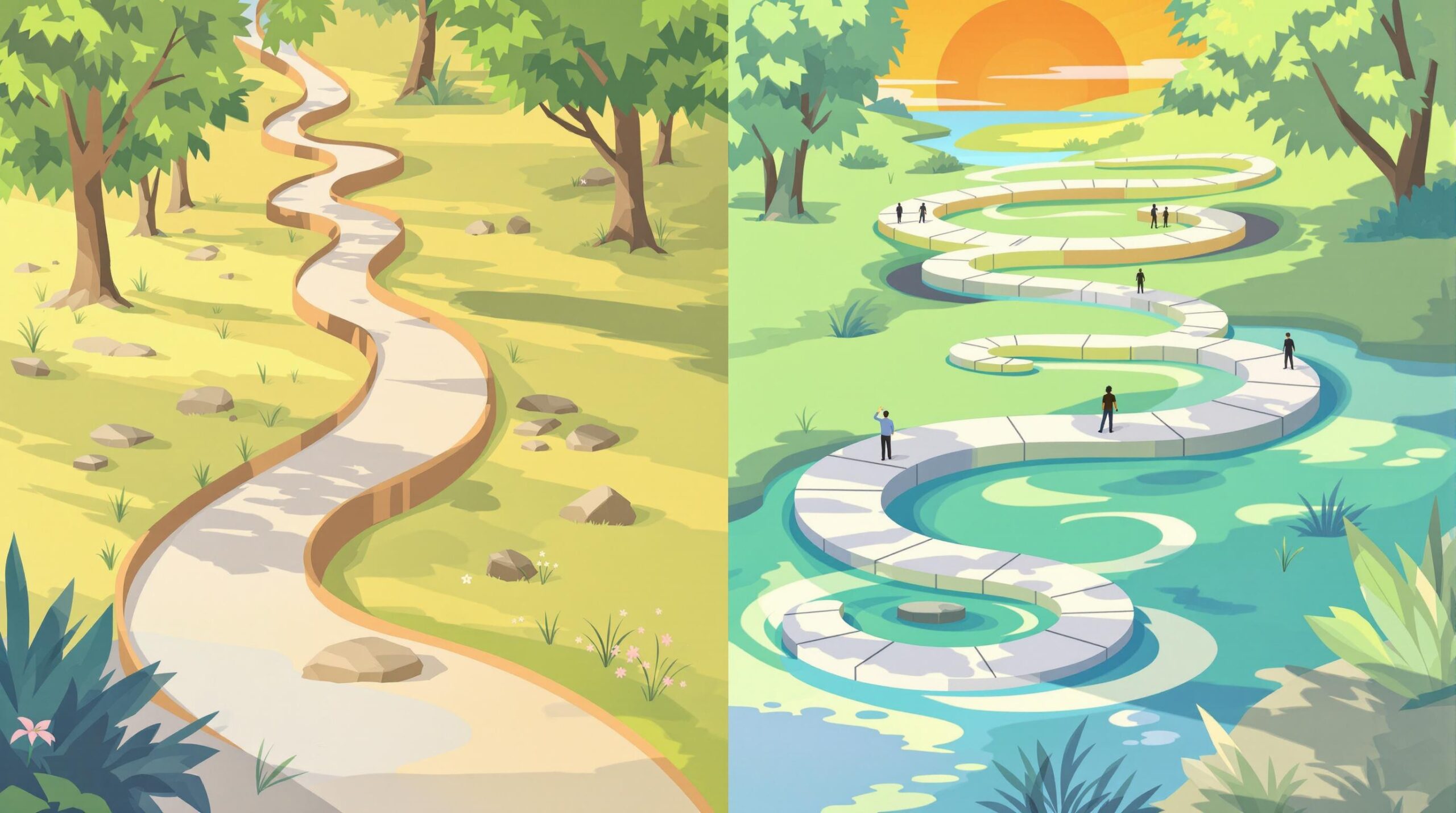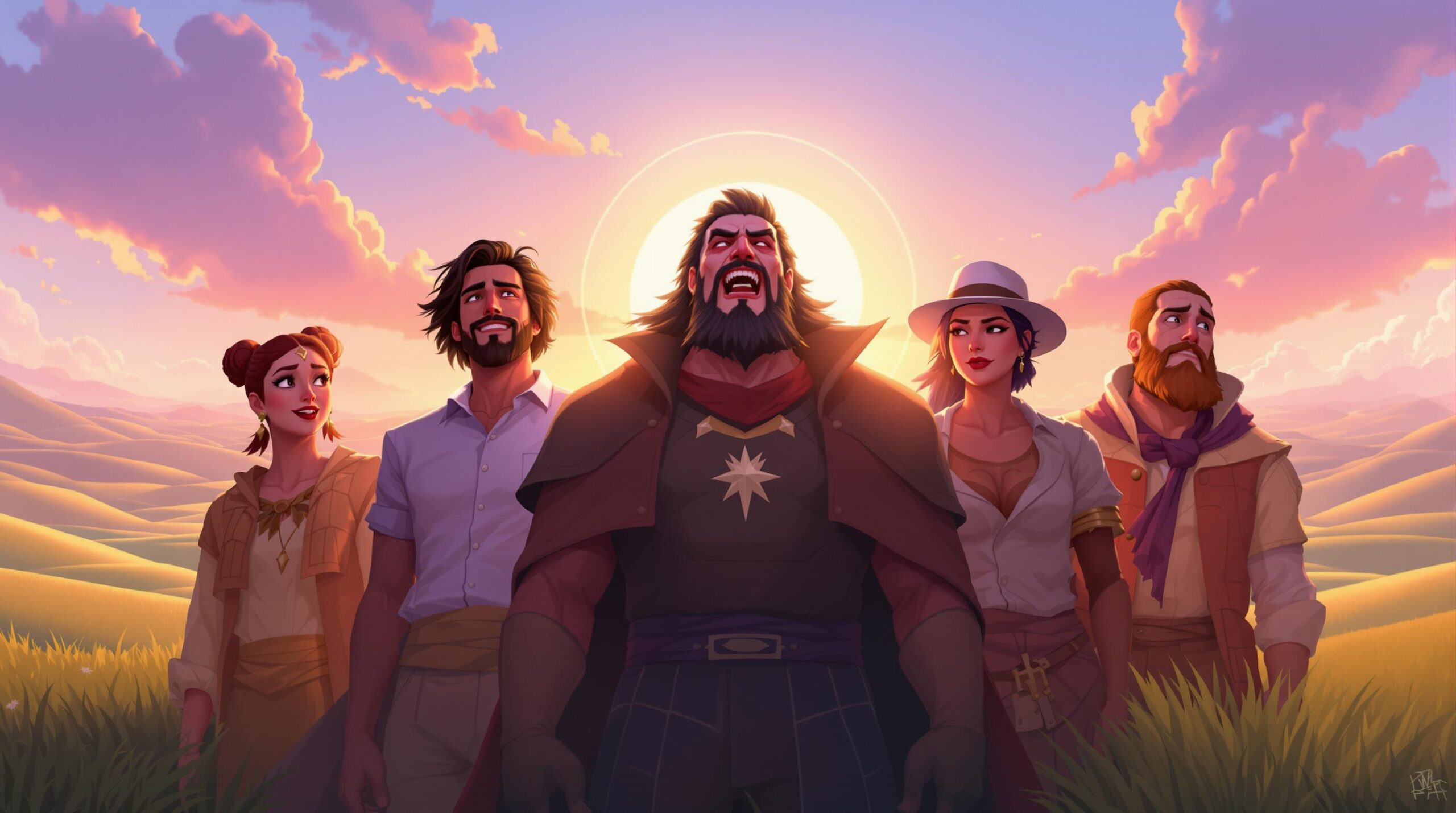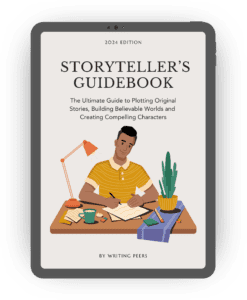Pantser vs. Plotter: Which Writing Style Works Best?
Some writers plan every detail before they write. Others dive in with no plan at all. These two approaches – plotting and pantsing – each have unique benefits and challenges. Plotters thrive on structure, while pantsers embrace spontaneity. But which one works better for you? Here’s a quick breakdown:
- Pantser: Write without a plan, let the story unfold naturally.
- Plotter: Plan everything in advance, from characters to plot points.
- Plantser: A mix of both – some planning, but with room for flexibility.
Quick Comparison
| Aspect | Pantser | Plotter |
|---|---|---|
| Creative Freedom | High, spontaneous storytelling | Guided by detailed planning |
| Writing Speed | Slower, requires more revision | Faster drafting with clear plans |
| Story Structure | Evolves during writing | Pre-defined before starting |
| Revisions Needed | Extensive | Minimal |
Your choice depends on your personality, goals, and the project at hand. Experiment with both styles – or combine them – to find what keeps you inspired and productive.
Defining Pantser and Plotter Writing Styles
The Pantser Approach
A pantser dives into writing with minimal preparation, relying on spontaneity and creativity to shape the story as it unfolds. With just a basic idea, character, or setting in mind, pantsers let their imagination take the lead, discovering plot twists and character arcs as they write [2][3].
This approach prioritizes creative freedom, often leading to unexpected and exciting developments. Stephen King is a well-known advocate of this style, describing his process as one of discovery – similar to uncovering a hidden treasure.
The Plotter Approach
Plotters, on the other hand, prefer a structured method. Before writing a single word of their draft, they invest time in planning and organizing their story. This often involves creating detailed outlines that cover key elements like story structure, character profiles, and major plot points [3][4].
Plotters aim for consistency and clarity, often using tools or software to keep their ideas organized. This method provides a clear roadmap, making it easier to stay on track during the writing process [3][4].
The main difference between these approaches lies in their starting point: pantsers embrace the unknown, letting their story evolve naturally, while plotters rely on pre-planned structures to guide their work. Both methods have their own strengths and can suit different personalities and creative styles [4][5].
Next, we’ll explore the strengths and challenges of each approach to help you decide which one might fit your writing process best.
Planners & Pantsers (Gardener & Architect)
Comparing Pantser and Plotter: Key Differences
Pantsers thrive on spontaneity, diving into their stories with little pre-planning. Plotters, on the other hand, rely on structure, creating detailed plans before they start writing. These two approaches shape how writers tackle their projects and can influence everything from productivity to creativity. Knowing the differences can help writers decide which method aligns better with their style and goals.
The writing process for each is quite distinct. Plotters spend a lot of time in the pre-writing phase, crafting outlines and character profiles. This upfront effort often makes drafting smoother and reduces the need for heavy revisions. Pantsers, however, prefer to jump straight into writing, letting the story and characters evolve naturally. While this can lead to richer character development, it often requires more editing to ensure the story flows well.
Time management also looks different for these two styles. Plotters often work with detailed or flexible outlines that map out key scenes but leave room for adjustments [3]. This structured approach helps maintain steady progress. Pantsers, however, might experience bursts of creativity followed by pauses as they figure out their next steps.
Pros and Cons Comparison Table
| Aspect | Pantser | Plotter |
|---|---|---|
| Creative Freedom | High, with room for spontaneity | Guided by structure |
| Writing Speed | Slower initial draft | Faster drafting with a plan |
| Story Structure | Evolves during writing | Defined before writing |
| Character Development | Unfolds naturally | Carefully pre-planned |
| Revision Process | Often extensive | Focused on fine-tuning |
| Writer’s Block | May struggle with direction | Can rely on outline |
| Time Investment | Minimal planning, more revision | More planning, less revision |
Productivity can also differ. Plotters tend to make consistent progress thanks to their clear roadmap, while pantsers might alternate between quick writing sessions and longer breaks to regain direction. Ultimately, the choice often comes down to a writer’s natural tendencies. Some find that having a detailed plan sparks their creativity, while others feel that too much structure limits their imagination [3][4].
Now, let’s dive into some practical tips to help both pantsers and plotters sharpen their writing process.
sbb-itb-c17b0a0
Practical Advice for Pantsers and Plotters
Advice for Pantsers
If you’re a pantser, keeping your momentum is key. Set daily word count goals or try 25-minute writing sprints with short breaks to keep the ideas flowing. Writing prompts can help spark creativity, and freewriting – where you write without stopping or editing for a set time – can help you reconnect with your story. To stay somewhat on track, consider keeping a loose list of scenes as a guide. Tools like Writing Peers‘ dialogue guides can also help you craft more natural character interactions.
While pantsers thrive on spontaneity, plotters tend to excel with a structured approach.
Advice for Plotters
Plotters often succeed by building clear but flexible outlines. Tools like Scrivener can help you organize your story structure, while Writing Peers’ Storyteller’s Guidebook is a great resource for laying a strong foundation for your project [6]. Your outline might include major plot points, character arcs, chapter summaries, and timelines to keep everything in order.
That said, don’t fall into the trap of over-planning. Leaving some room for creative surprises can make the writing process more enjoyable. Writer’s Relief points out that a balance between structure and flexibility can enhance your storytelling experience [1]. For pacing, Writing Peers’ plot pacing grapher can help ensure your story flows smoothly and keeps readers engaged.
Choosing the Right Style for You
Trying Both Styles
Finding the writing approach that works best for you takes some experimentation. Try writing a short story in two ways: first, as a pantser, letting the story unfold as you go, and then as a plotter, using a detailed outline to guide you.
Dedicate equal time and effort to both methods. Pay attention to how each approach feels – does planning boost your energy or leave you drained? Does writing without a plan feel freeing or chaotic? Reflecting on this experience can help you figure out which method aligns better with your natural writing style.
Understanding Your Writing Habits
After experimenting, take a closer look at your writing habits to see which approach fits you better. Here are some key factors to consider:
| Factor | Signs You Might Be a Pantser | Signs You Might Be a Plotter |
|---|---|---|
| Writing Flow | Energized by spontaneity | Prefer having a clear plan |
| Story Development | Discover plot as you write | Map out major points before starting |
| Revision Process | Often need more extensive rewrites | Usually require fewer structural changes |
| Productivity | Work well with flexible deadlines | Excel with structured timelines |
Your preference might change depending on the project. For instance, intricate plots might work better with a plotter’s approach, while stories focused on characters may lean toward a pantser style [3][4].
You don’t have to stick to just one method. Many writers find success by blending the two styles, a hybrid approach often called "plantser." This lets you adapt based on what your project needs [2][3].
To fine-tune your process, you might:
- Keep a writing journal to track which methods work best for you
- Join writing communities to gain insights from others’ experiences [2][3][5]
The goal is to find what keeps your creativity flowing and helps you make steady progress on your projects.
Conclusion: Finding Your Best Approach
Choosing your writing style is less about finding the "right" method and more about discovering what fuels your creativity. Whether you’re a pantser, a plotter, or somewhere in between, the key is to embrace what works for you.
"The plantser writing style offers you the benefits of both pantsing and planning. Writers who want to combine the advantages of plotting out a novel with giving the characters free rein often use the plantser writing style." [1]
Your approach doesn’t have to stay the same. It can shift depending on the project, genre, or even your mood. Some stories may demand detailed outlines, while others might flourish with a more free-flowing method. The most important thing is staying productive and inspired.
As you grow as a writer, trust your instincts but remain open to refining your process. Experience often shapes how you approach your work, and it’s okay for your methods to evolve over time. The goal is to find a way that keeps you motivated and moving toward your writing aspirations.
No matter your style, having the right tools and resources can make your journey smoother and more rewarding.
Useful Resources for Writers
No matter your writing style – whether you dive in without a plan or meticulously map out every detail – having the right tools can make the process smoother and more enjoyable. Here’s a look at some resources tailored to different approaches.
Writing Tools and Platforms
Platforms like Writing Peers provide a variety of resources for writers, including character workbooks, plot structure guides, and writing prompts. These tools can cater to both structured and more freeform writing styles, helping you refine your process and stay on track [3][4].
Here are some practical resources based on your preferred approach:
| Resource Type | For Plotters | For Pantsers |
|---|---|---|
| Planning Tools | Story outlines, Structure guides | Character sketches, Writing prompts |
| Development Aids | Plot mapping, Timeline tools | Dialogue guides, Creative exercises |
| Support Resources | Progress tracking, Scene planners | Writing sprints, Inspiration tools |
The key is to pick tools that work with your natural style, not against it. Whether you like to plan every scene or let your story unfold as you write, the right resources can help you stay motivated and overcome hurdles [2][3].





